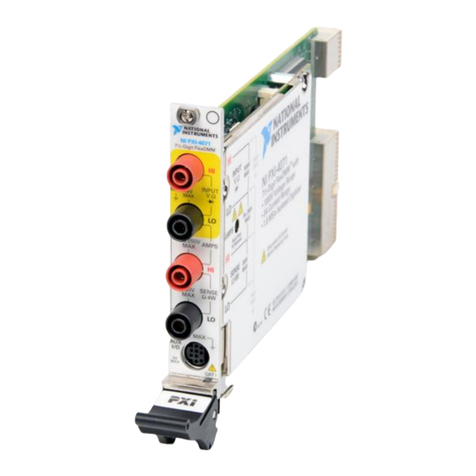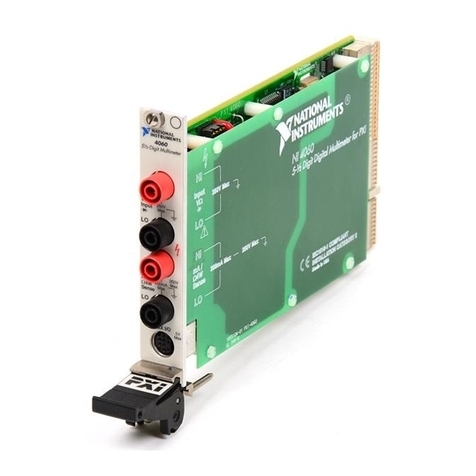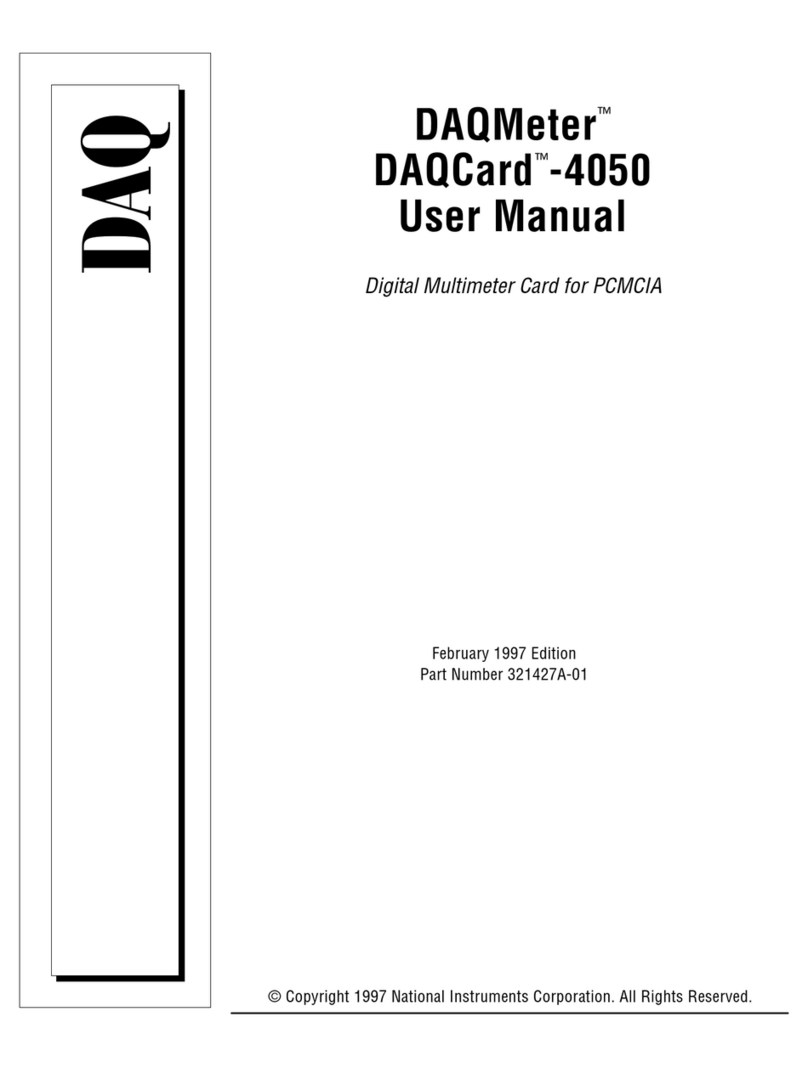
NI Digital Multimeters Getting Started Guide 2 ni.com
Conventions
The following conventions are used in this manual:
»The »symbol leads you through nested menu items and dialog box options
to a final action. The sequence File»Page Setup»Options directs you to
pull down the File menu, select the Page Setup item, and select Options
from the last dialog box.
♦The ♦symbol indicates that the following text applies only to a specific
product, a specific operating system, or a specific software version.
This icon denotes a tip, which alerts you to advisory information.
This icon denotes a note, which alerts you to important information.
This icon denotes a caution, which advises you of precautions to take to
avoid injury, data loss, or a system crash.
bold Bold text denotes items that you must select or click in the software, such
as menu items and dialog box options. Bold text also denotes parameter
names and information on hardware labels.
DMM Digital multimeter—refers to either the NI PCMCIA-4050, NI PCI-4060,
NI PXI-4060, or NI PXI-4070 unless specified otherwise.
italic Italic text denotes variables, emphasis, a cross reference, or an introduction
to a key concept. This font also denotes text that is a placeholder for a word
or value that you must supply.
monospace Text in this font denotes text or characters that you should enter from the
keyboard, sections of code, programming examples, and syntax examples.
This font is also used for the proper names of disk drives, paths, directories,
programs, subprograms, subroutines, device names, functions, operations,
variables, filenames and extensions, and code excerpts.
Introduction
This document explains how to install, configure, test, and set up a National
Instruments digital multimeter (DMM) for common measurements. For
more information on the DMM, such as features and programming, refer to
NI Digital Multimeters Help at Program Files»National Instruments»
NI-DMM»Documentation»NI Digital Multimeters Help.
Detailed specifications about your DMM are available in the specifications
guide included with your DMM module.
































